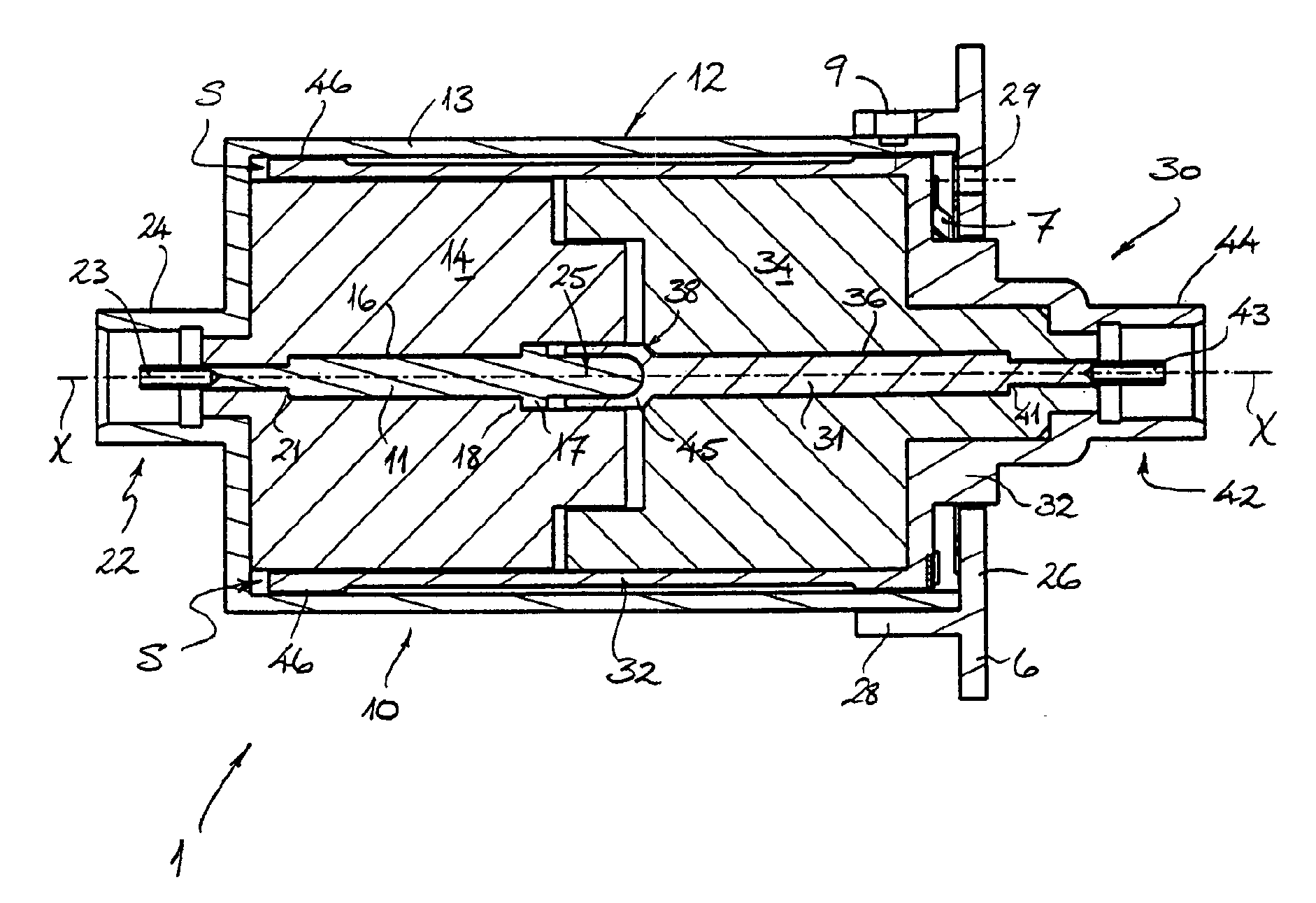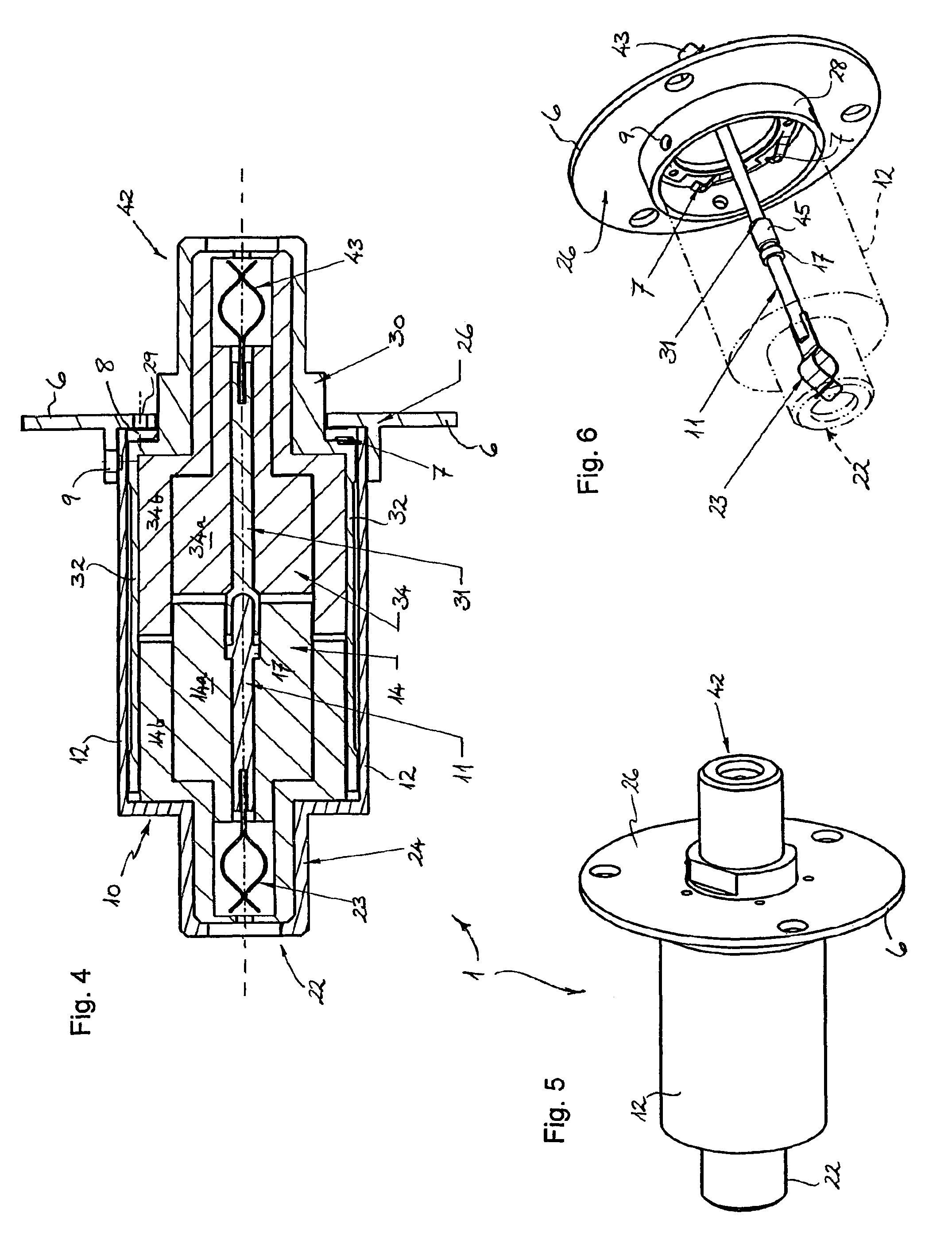Rotatable electrical coupling device
a coupling device and rotating technology, applied in the direction of electrically conductive connections, coupling device connections, rotary current collectors, etc., can solve the problems that the coupling design is not always suitable to meet the requirements, and achieve the effect of reducing contact area and minimising frictional interferen
- Summary
- Abstract
- Description
- Claims
- Application Information
AI Technical Summary
Benefits of technology
Problems solved by technology
Method used
Image
Examples
Embodiment Construction
[0036]With reference firstly to FIGS. 1 to 3 of the drawings, a rotatable electrical coupling device 1 for a high-frequency and / or high-speed data transmission according to a preferred embodiment of the invention is illustrated. The electrical coupling device 1 has a first connector 10 and a second connector 30, which are shown in FIG. 1 and FIG. 3 of the drawings in a combined or coupled state in rotatable engagement with one another. The exploded view of the coupling device 1 in FIG. 2 more clearly illustrates the various components of each of the first and second connectors 10, 30.
[0037]With particular reference to FIGS. 1 and 2, therefore, the first connector 10 of the coupling device 1 can be seen to include a first electrical contact member 11 which is generally elongate and formed as a rod- or pin-like member. This rod- or pin-like first contact member 11 has a generally circular cross-section and extends centrally of the first connector 10. Furthermore, the first contact mem...
PUM
 Login to View More
Login to View More Abstract
Description
Claims
Application Information
 Login to View More
Login to View More - R&D
- Intellectual Property
- Life Sciences
- Materials
- Tech Scout
- Unparalleled Data Quality
- Higher Quality Content
- 60% Fewer Hallucinations
Browse by: Latest US Patents, China's latest patents, Technical Efficacy Thesaurus, Application Domain, Technology Topic, Popular Technical Reports.
© 2025 PatSnap. All rights reserved.Legal|Privacy policy|Modern Slavery Act Transparency Statement|Sitemap|About US| Contact US: help@patsnap.com



